
Total cost of ownership: pneumatic vs electric linear actuators
Who doesn’t like to save money? We’re all in search of a good deal, but how do you define what’s good? If you buy something on the cheap but it falls apart in a short time, is that a good deal? Maybe it’s smarter to pay more for something that last longer and performs better.
In business, this means considering total cost of ownership (TCO), that is, initial acquisition cost plus operating costs. Comparing TCO to purchase price alone is especially interesting when applied to pneumatic and electric linear actuators.
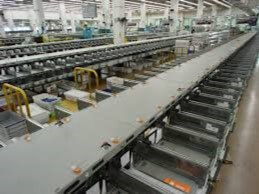
Electric cylinders essential to advanced conveyor system [Case Study]
Conveying systems are common in manufacturing. They can be straight-forward systems that take packages from point A to point B or complex ones for sorting and diverting. Systems used in food processing also must handle washdowns, a common practice in the industry.
As critical components, linear actuators must withstand the challenges of the application including environmental ones. Pneumatic cylinders have been used extensively in conveying. However, electric cylinder use is growing, fueled by demand for programmability and better accuracy.
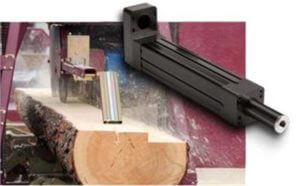
High force linear actuators – hydraulic vs electric [WEBINAR]
When your application calls for a high force linear actuator, you may believe that your only choice is a hydraulic cylinder. Hydraulics have long been the leading choice for automation equipment needing high force. However, now there are electric high force linear actuators that offer important advantages over hydraulics in terms of performance and total cost of ownership. Watch this webinar, and you may want to reconsider the merits of using an electric rod actuator.
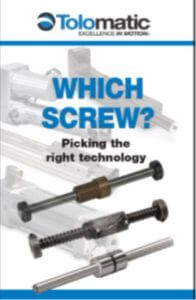
Which is best for high force linear actuators: Ball or roller screws?
If you’re selecting an electric high force linear actuator, you may believe you know the answer to the question in the headline. The force transmission prowess of roller screws is well known. But before you go to the expense of a roller screw linear actuator, take a careful look at the application. You may find that a ball screw actuator will do the job. And that could mean significant savings.

How to specify an electric linear actuator that’s industrial strength
Manufacturing environments can be challenging. There may be dust or metal shavings. There may be oil, coolant, or water. There may be corrosive agents like solvents, cleaners, and various chemicals and compounds.
All these factors impact the performance and life of components like electric linear actuators. Dust may clog the action or cause parts to wear out prematurely. Moisture may short electrical connections and cause rusting. Corrosive agents can eat away at housings, seals, fasteners, and more. Industrial environments call for industrial strength components.
A machine designer needs confirmation that a component will stand up to environmental factors.

Electric rod actuator cleans up after hydraulics
Hydraulic cylinders are well-known linear motion workhorses in industrial machinery. They’re reliable, familiar, capable of high force, and affordable, but they’re not without disadvantages. The leading ones are fluid leaks, large footprint (with hydraulic power unit or HPU), cumbersome changeovers due to lack of programmability, and high maintenance costs.
The introduction of electric high force linear actuators means machine designers now have a choice. An electric rod actuator can replace a hydraulic cylinder and eliminate the need to clean up leaks.
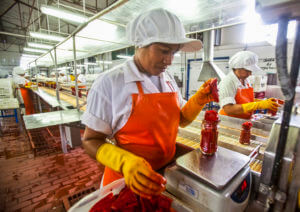
Machine design, FSMA, and electric rod actuators
Machine designers who serve the food processing industry face a huge opportunity. Purchases of equipment are expected to grow 7% a year to around $70 billion by 2020.
Not surprisingly, consumer demand is fueling this growth, but equally important in the U.S. is the Food Safety Modernization Act or FSMA. This legislation requires that food processors be proactive on food safety, that is, they must identify potential hazards and mitigate them.
A major result of the FSMA has been stepped up cleaning requirements and increased demand for hygienic equipment. That equipment needs washdown-ready components like electric rod actuators.

Go long! Selecting a long stroke electric linear actuator
Some linear actuator application requirements mean you have to go long. Long stroke, that is. Length of stroke is a critical factor in electric linear actuator selection. While some applications require moves of just inches or a few feet, others require moves of 10 feet or more. For an application requiring this kind of long stroke linear actuator, a belt driven rodless electromechanical actuator will be your solution.
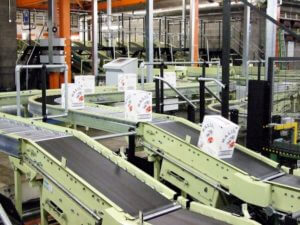
Integrated servo motor/controller/drive saves cost and plant space
Space is at a premium in most manufacturing operations. And of course, saving money is a constant goal. Plant managers are looking for ways to save money and space, so machine designers are tasked with creating ever more compact, affordable systems.
A new class of products addresses the needs for lower cost and efficient use of space: the integrated servo motor/controller/drive. These systems combine a servo motor and controller with a servo drive. They’re compact and eliminate the need for a drive cabinet.

Lightweight servo actuators lower robotic RSW costs
Buyers want sturdy, well-built cars, so the quality of welds that hold auto bodies together is crucial to vehicle manufacturers. Manufacturers want strong welds that are consistently and accurately placed so the finished car looks both durable and attractive.
Welding robots for resistance spot welding (RSW) have been a boon to auto manufacturers because they provide consistent weld placement. But all welding robots need actuators to carry and power the weld gun. Those actuators have a huge impact on the consistent quality of welds. They can also impact the cost of robotic resistance spot welding.

 Ask an Engineer
Ask an Engineer